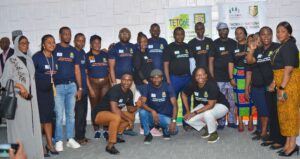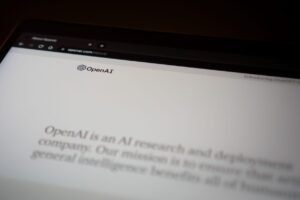Saa ngapi (What time is it)?
Saa mbili na nusu. Literally this means: Hour two and a half, so one would say the time is 2.30, right? No! Swahili time is different from English time. In Tanzania they start counting the hours after the moment the sun rises which is on average 6 am each day. This means that 7 am in Swahili time is 1 o’clock. When making appointments with Tanzanians, be sure to check whether they mean English or Swahili time. To make it even more complicated, the division between am and pm is also not as straightforward as one might think. The following words should be added for this distinction: Alfajiri (4am-5am), asubuhi (6am-12pm), mchana (12pm-3pm), jioni (4pm-7pm), usiku (8pm-3am). So do you know what time you should be ready when the taxi driver says he will pick you up at “saa mbili na nusu, asubuhi”?
Another important aspect of learning Kiswahili are the greetings. There are a lot of different ones, depending on how old you are, the number of people you are with and the situation you are in. Often you need to check whether everything is okay with the person’s house, family and work before you can actually start talking about the things you wanted to discuss. Although I do not need to speak Kiswahili at work-, I find it very useful to negotiate about the prices for mangos, clothes and bajaj trips in Kiswahili. And I am eager to become more fluent at it to be able to follow conversations of other people. You know they are talking about you when you hear the word Mzungu (foreigner). Some Swahili words are easy to remember: for example, “kipilefti” is the word for roundabout. With other words you have to be very careful: “Nimeelewa” means “I understand”, “Nimelewa” means “I am drunk”.
Before the Easter weekend, I went to Mwanza to visit the universities there. Mwanza is in the Northwestern part of Tanzania situated at Lake Victoria. Since Mwanza is only one overnight ferry trip away from Bukoba, I decided to visit some other VSO-ers there over the Easter weekend. The ferry ride was quite claustrophobic, packed in a small hut with 7 people, but I was able to sleep well and next early morning I was in Bukoba, close to the Ugandan border. The other VSO-ers work at hospitals and schools close to Bukoba and the surroundings are beautiful. One day we rented pikipikis (motorcycles) to bring us to a waterfall nearby. Sitting on the back of a pikipiki passing houses, shops, waiving children, banana trees, families dressed up to go to church is an amazing experience. Monkeys crossing the road, birds circling in the sky, Tucan-like birds in the trees — Tanzania is beautiful! Surprisingly enough, there are not many research publications on tourism. From what I have seen so far, the Eastern African Journal of Hospitality, Leisure and Tourism, published by St. Augustine’s University in Mwanza is the only Tanzanian journal being published in this field.
One interesting way of publishing Tanzania-relevant research is done by the Sokoine University in Morogoro. This university is keen on having research results disseminated to a wide audience and publishes a “From the Field” section in their Journal of Continuing Education and Extension. They would like to strengthen this section and have it widely distributed throughout Tanzania and other countries. They are currently looking into possibilities to broaden the audience for this section, through activities such as distributing pamphlets containing research results (farming techniques/health information) to the general public. Another way of making the content visible and available is through social media and mobile app development as the number of people with a smart phone in Tanzania is growing rapidly. These subjects will be covered in the project’s training programme.
Although there is an existing demand for academic publications by Tanzanian authors in a Tanzanian context and the need to disseminate these research results to the general public, some commercial publishers I have spoken to, are quite sceptical about this. Some say there is no reading culture in Tanzania and schools and universities are not stimulating their students to read high quality publications. According to them, the amount of high quality scientific book submissions they receive are very rare, as universities only focus on quantity instead of quality and researchers do not have enough time to write because of heavy teaching loads. I have to admit there might to be some truth to this as some universities seem to launch new journals simply to have 1 journal per faculty, without a clear focus or scope. However, most of the researchers I have been speaking to are very keen to improve the quality of Tanzanian research output by, for example, attending the INASP training workshops on improving academic writing skills, organising writing courses and following online courses.
After travelling throughout Tanzania to visit the universities, it is quite difficult to be back in Dar with its hot, humid weather and terrible traffic — especially now during the rainy season. Roads get flooded and destroyed by the heavy rains, so the traffic jams are even worse. Bridges linking the different regions are washed away and people were stranded at bus terminals for days. In several parts of the city, houses have become uninhabitable due to damage caused by the floods. Tanzanians say this year the weather seems even more unpredictable compared to previous years. Hopefully the rainy season will end soon as I definitely prefer the heat over this torrential rain.
In my next blog you will read about the launch of the consortium of academic publishers in Tanzania.




